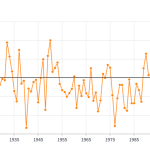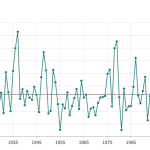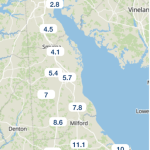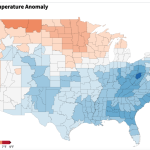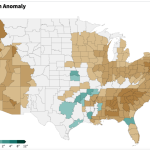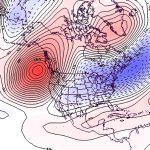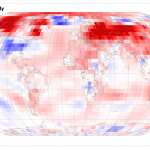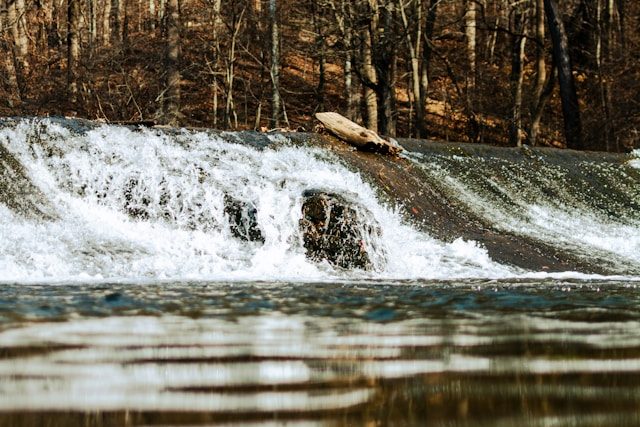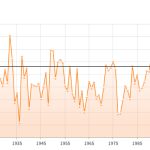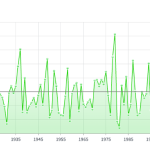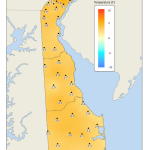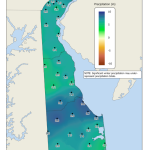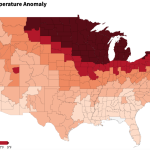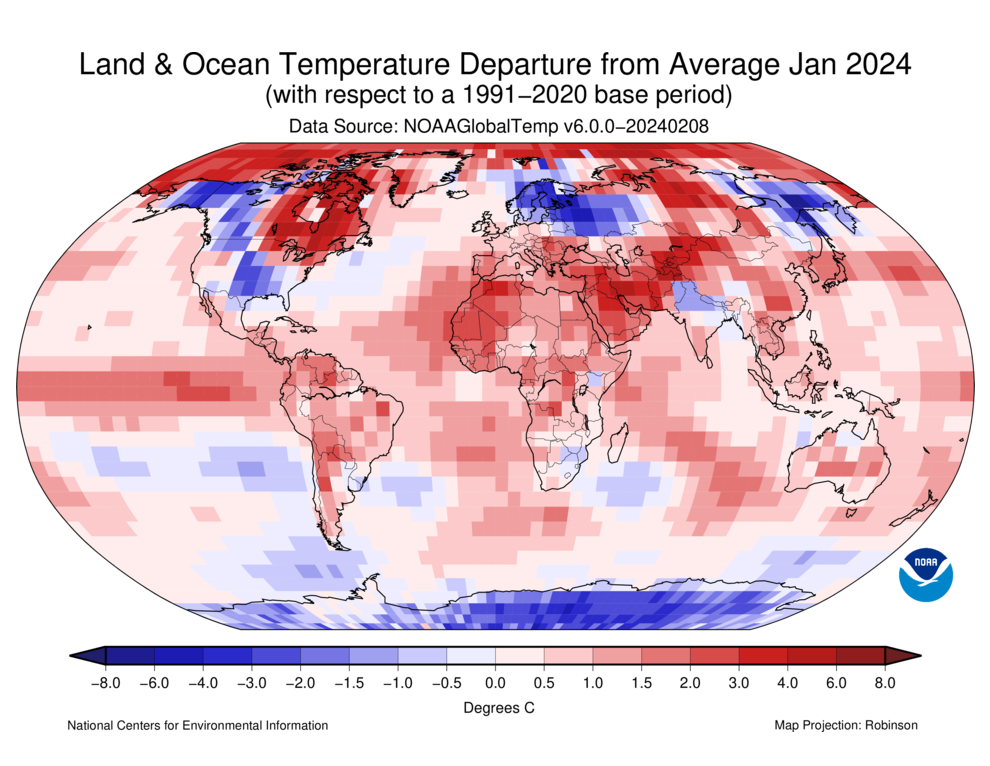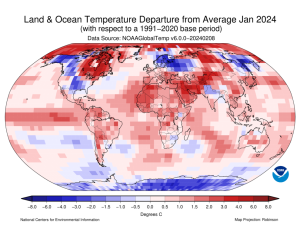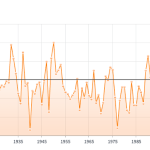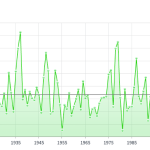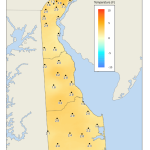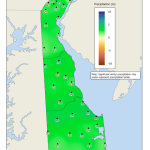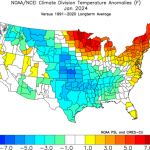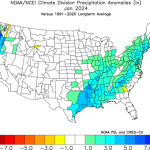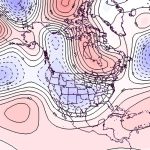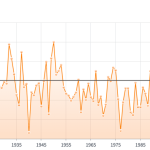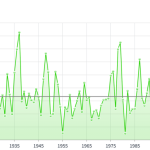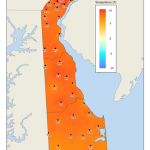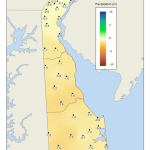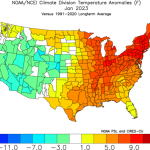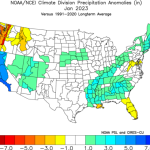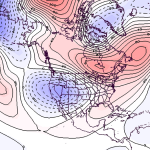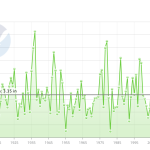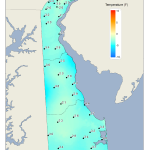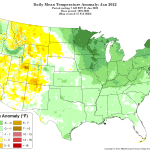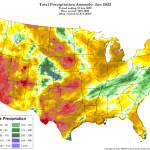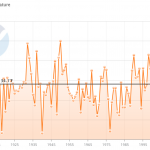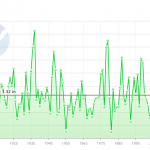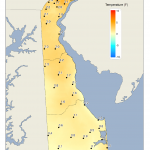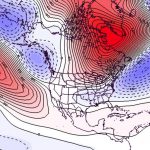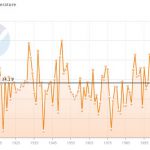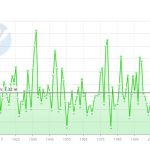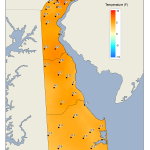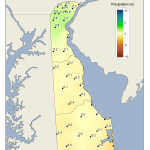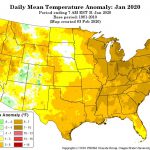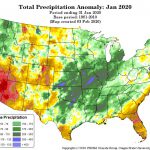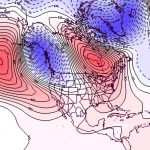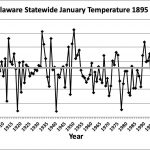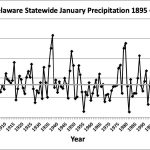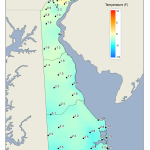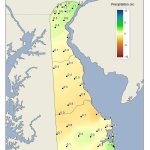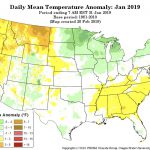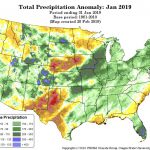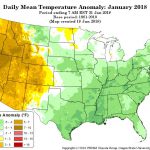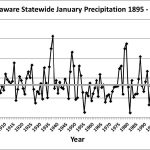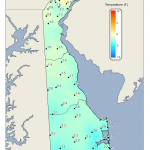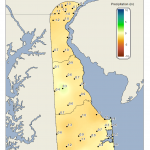January Temperatures
Preliminary data indicates that the statewide average temperature in January was 29.6°F, which is 5.6°F below the 1991-2020 mean value of 35.2°F (Figure 1). January 2025 was tied with two other years as the 22nd coldest January since observations began in 1895.
January Precipitation
Delaware’s statewide precipitation for January 2025 averaged 1.37 inches, 1.98 inches below the 1991-2020 mean of 3.35 inches (Figure 2). January 2025 was the 4th driest January since 1895.
Statewide Spatial Anomalies
Data from the Delaware Environmental Observing System (DEOS) show that temperatures were uniformly cold across the State, with many locations seeing negative departures of greater than 5°F (Figure 3). Delaware experienced one major snowfall event on January 6th.
Snowfall totals of over 10 inches were common across much of northern Sussex County with values decreasing from south to north across Kent and New Castle Counties (Figure 4).
National Anomalies
Temperatures were below normal across the southern Rockies, the Mississippi Valley, the Southeast, and the Mid Atlantic (Figure 5), while locations across New England, the upper Midwest and the Pacific Coast saw above normal temperatures. Precipitation was generally below normal along both the Atlantic and Pacific Coasts (Figure 6), while the central portion of the country had near or just above normal precipitation. The 500 hPa height pattern for January showed an anomalous jet stream trough covering the eastern two-thirds of the United States (Figure 7) contributing to the temperature anomalies across the country.
Global Anomalies
January 2025 ranked as the warmest January on record for the globe since 1850. Global temperatures were 2.39°F above the 1901-2000 mean. Particular warmth was found across much of northern Asia, and across northwest portions of North America (Figure 8).
- Figure 1. Delaware statewide mean January temperature (degrees F) 1895-2025. The black line indicates the 1991-2020 normal (NOAA, NCEI, Climate at a Glance: Statewide Time Series).
- Figure 2. Delaware statewide January precipitation (inches) 1895-2025. The Black line indicates the 1991-2020 normal (NOAA, NCEI, Climate at a Glance: Statewide Time Series).
- Figure 3. January 2025 average temperature departures (degrees F) from the 1991-2020 mean based upon DEOS station data.
- Figure 4. January 6, 2025 snowfall totals (inches) based upon DEOS station data.
- Figure 5. United States climate division temperature anomalies (oF) for January 2025 (NOAA, NCEI, Climate at a Glance: Divisional Mapping).
- Figure 6. United States climate division precipitation anomalies (inches) for January 2025 (NOAA, NCEI, Climate at a Glance: Divisional Mapping).
- Figure 7. 500 hPa geopotential height anomalies for January 2025. Negative (blue) anomalies indicate the presence of an anomalous jet stream trough while positive (red) height anomalies indicate the presence of an anomalous jet stream ridge.
- Figure 8. Global temperature anomalies (degrees C) for January 2025 (NOAA, NCEI, Climate at a Glance: Global Mapping).


